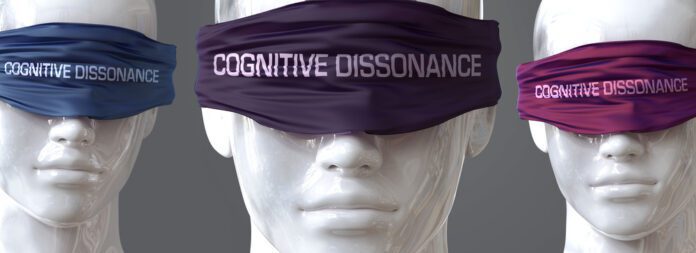Have you heard the term cognitive dissonance? Do you know that it affects our decision-making and the view of ourselves? In this article, I will explain what cognitive dissonance is, and how to identify it and most importantly how to use it positively. The use of these practices will help you understand your brain better and therefore you will find yourself making better decisions.
Cognitive dissonance is when we hold two conflicting ideas simultaneously. We face dissonance pretty much every day of our lives. To understand better, I am going to use the definition of social psychologist Carol Travis, as she identifies three different scenarios where we experience cognitive dissonance.
Three Scenarios We Can Experience Cognitive Dissonance:
1. The discomfort we feel when something we believe in is contradicted by evidence. For example, if you were a scientist in 1543 you would believe that the sun revolves around the earth and all of the sudden ones of our colleagues, Nicolas Copernico, shows evidence that is actually the other way around; the earth revolves around the sun. This is completely contradicting your beliefs. It leaves you with two opposite ideas:
Idea 1: The sun revolves around the earth
Idea 2: The earth revolves around the sun
This will create discomfort naturally. This is why it is so hard to accept new theories, especially ones that challenge our beliefs.
2. When we do something inconsistent with our view of self
Most people have a mental picture of themselves as ethical people. Now imagine that you find yourself acting in a way that is not up to par of what you expect of yourself. This creates cognitive dissonance. Suppose you think of yourself as a good person but your boss asks you to lie to your customers about the efficiency of a new product. What would you do?
3. When we hold two mutually contradictory ideas
This is typical of abusive relationships for example. Let’s say a husband verbally abuses his wife, and at the same time, he will profess complete devotion and love to her. This is a pretty common phenomenon. The wife then is left with two thoughts:
- he is abusive
- he loves me very much
Think about other scenarios where we can be presented with two conflicting ideas. As you can see, we face cognitive dissonance pretty much every day of our life.
Dissonance will cause discomfort and discomfort is the keyword in this subject. As humans, we don’t like to feel discomfort, in fact, we avoid it. When we do feel discomfort, our brains try to resolve that discomfort immediately.
Now, the discomfort can be:
- emotional: feeling guilt after smoking a cigarette
- physical: this can range from feeling anxiety to having panic attacks
How Can We Use It To Our Advantage?
Leon Festinger, an American social psychologist, was the first person to introduce the concept of dissonance in 1957. He proposed that they are 4 ways to resolve cognitive dissonance. The goal is to achieve cognitive consonance.
Let’s utilize the example of a smoker that knows that smoking causes cancer. The smoker could:
1. Change one of the conflicting thoughts, such as “well, smoking is not that bad”
2. Change the behavior and stop smoking
3. Add new thoughts to rationalize the inconsistency -“ yeah smoking is bad, BUT I work out every day so I am fine”
4. Trivialize the inconsistency “sure smoking is bad and I smoke, but I just don’t care”
See how easy it is for our brain to justify our actions? The best idea will be to stop smoking of course. But our brains will present us with different options to try to justify the behavior, to eliminate the discomfort as quickly as possible. This is why we can find ourselves making impulsive decisions, just so we can eliminate the discomfort quickly.
Professor David Luban introduced the idea that when our behaviour is not in line with our moral compass, our mind will rather change our moral beliefs than to adjust to our new behavior.
Let’s go back to the example when your boss asked you to lie to your customers about a product. At first, you may feel guilty because you don’t think of yourself as a liar. But eventually, you will get comfortable with the idea of lying, if you start to do it and continue. Your beliefs will align with your actions to prevent discomfort inside of you. This is when things get dangerous.
This is why it is important to understand cognitive dissonance and how to use it to your favor. It can help us understand ourselves better.
4 Helpful Ways To Use Cognitive Dissonance Positively:
- Never ignore the guilty feeling you get. Stop and analyze why you feel guilty and evaluate if your conduct actually aligns with your values
- Study the many means our minds use to justify our immoral actions and avoid them. For example, it was their fault I didn’t do anything wrong
- Get to know the most common rationalization that people use to excuse themselves, and stay away from them. For example, everyone else does it, it was only one time
- Following these practices will allow you to make better decisions, and objectively evaluate your conduct to become the best version of yourself and to understand ourselves better





